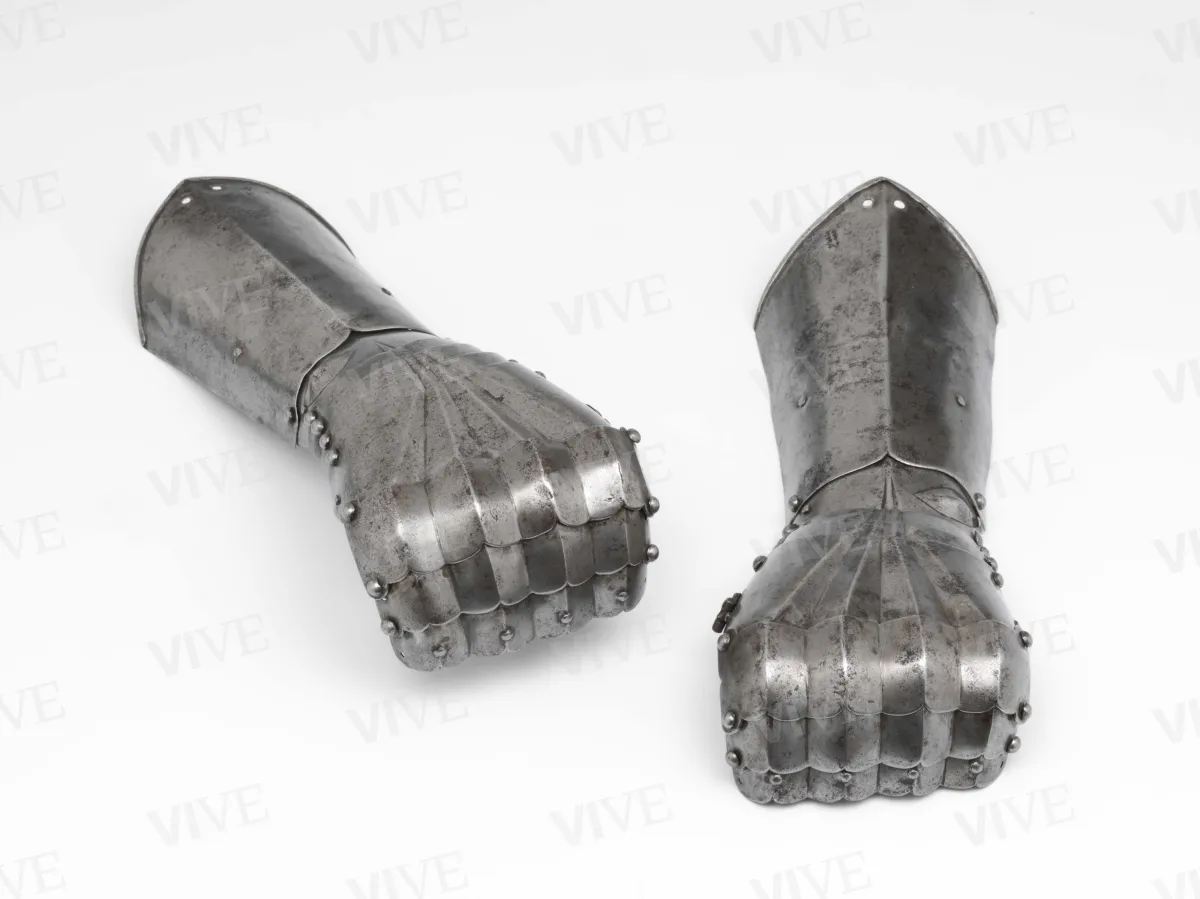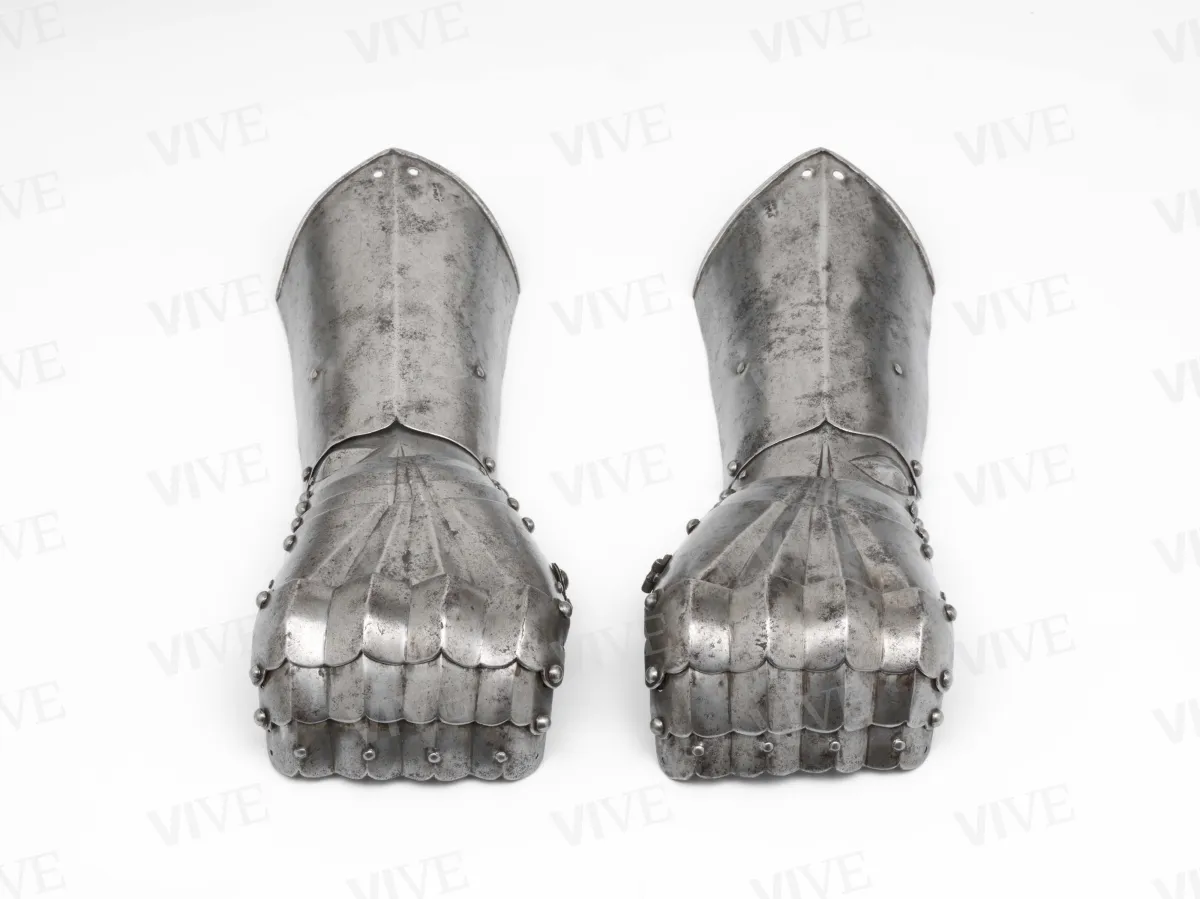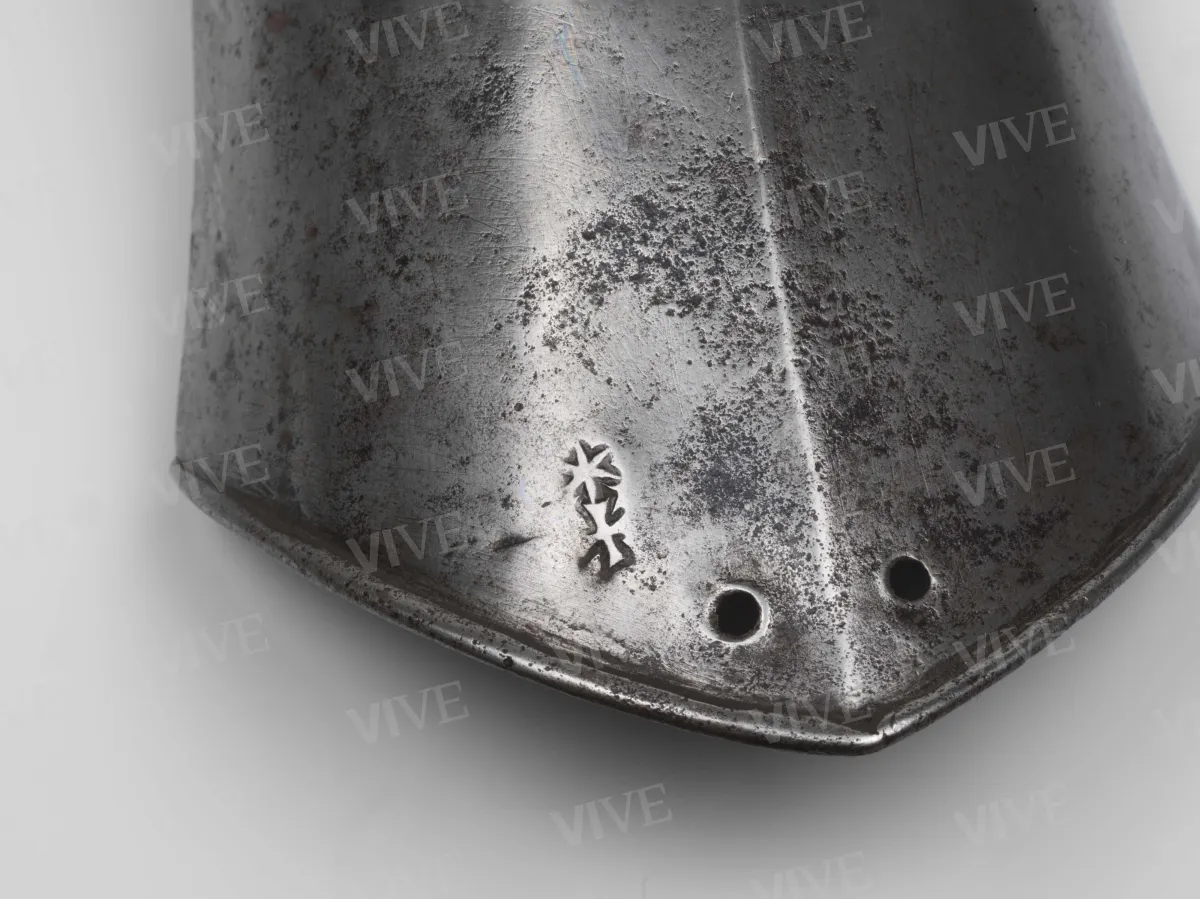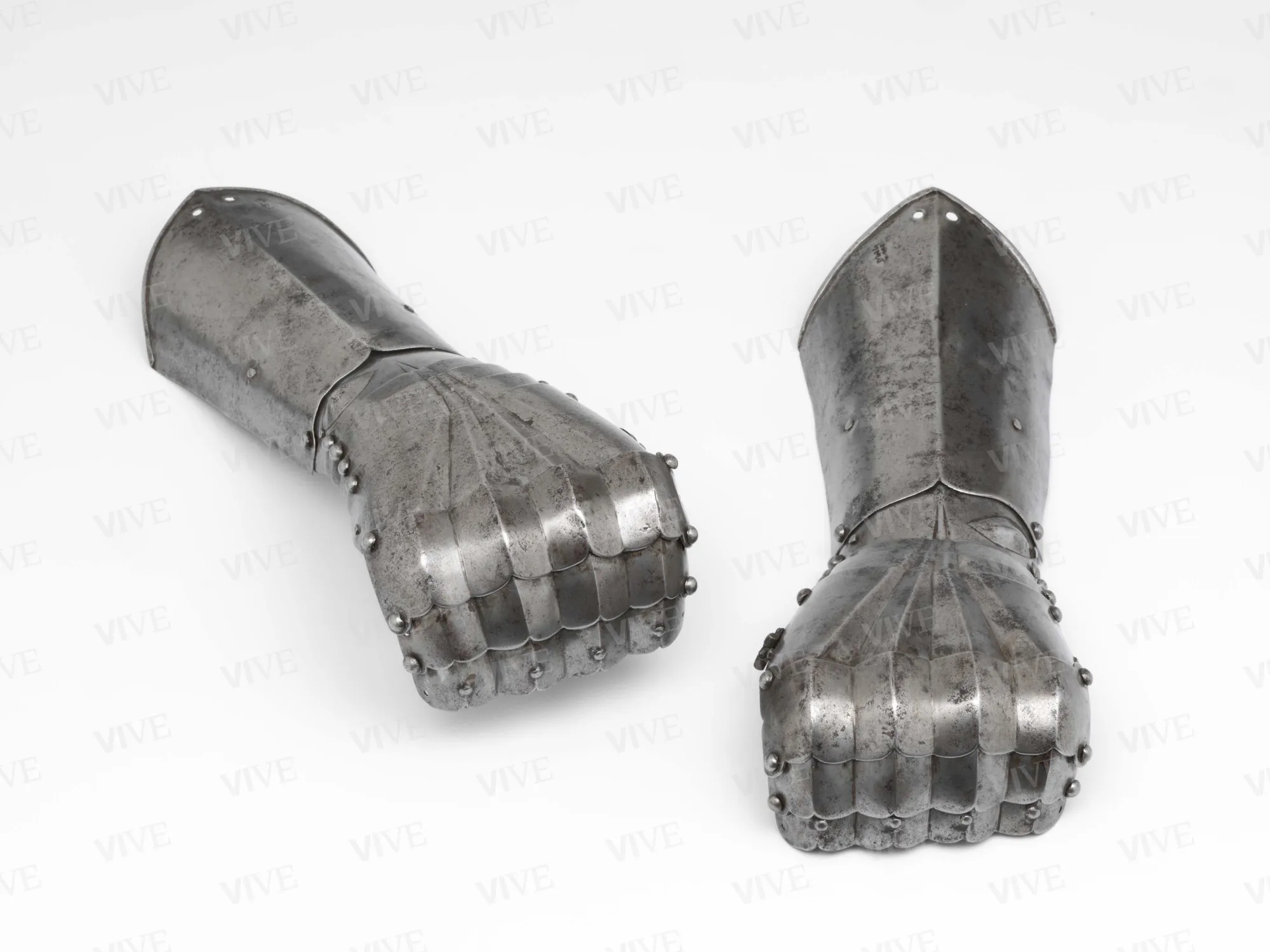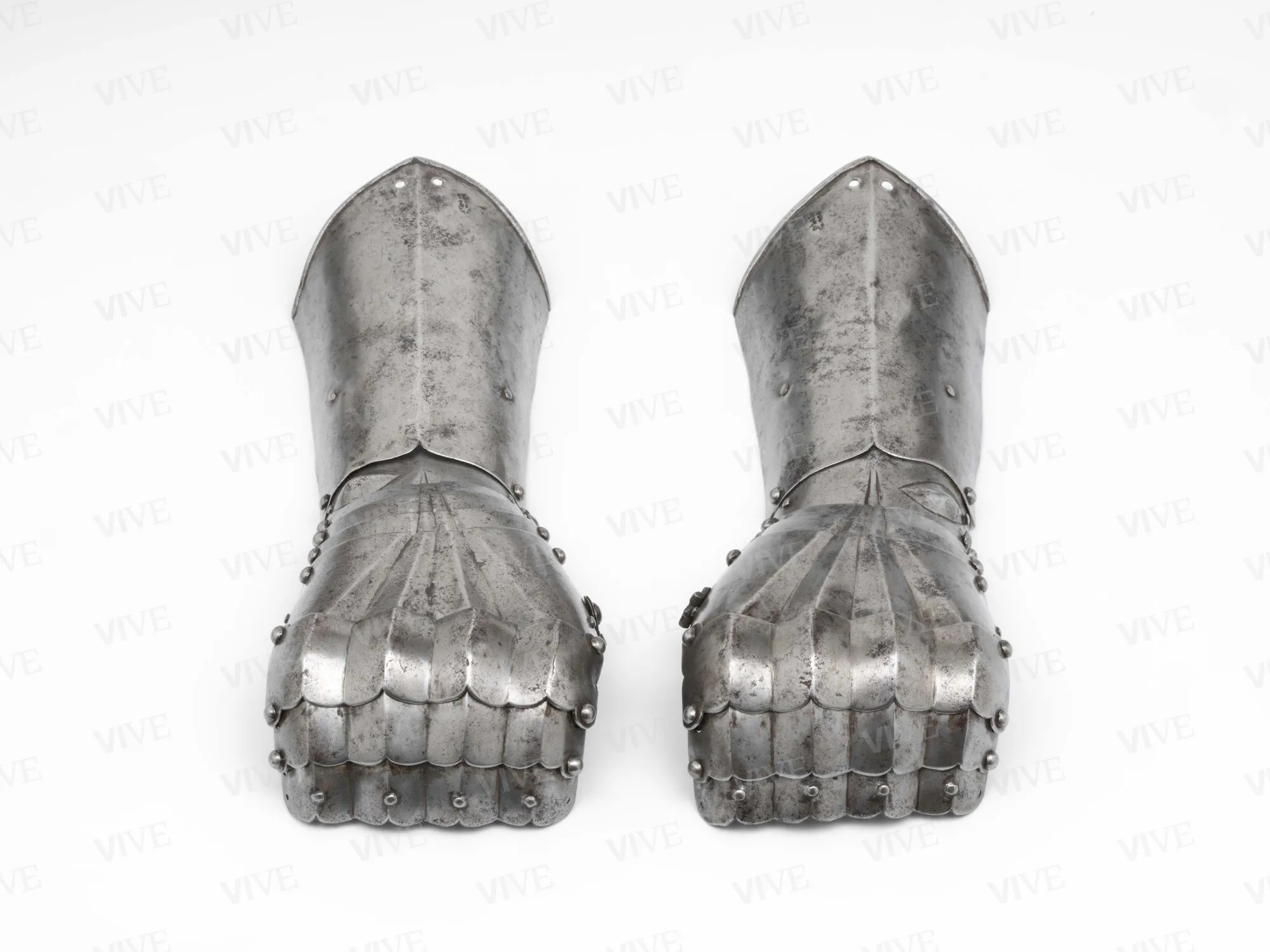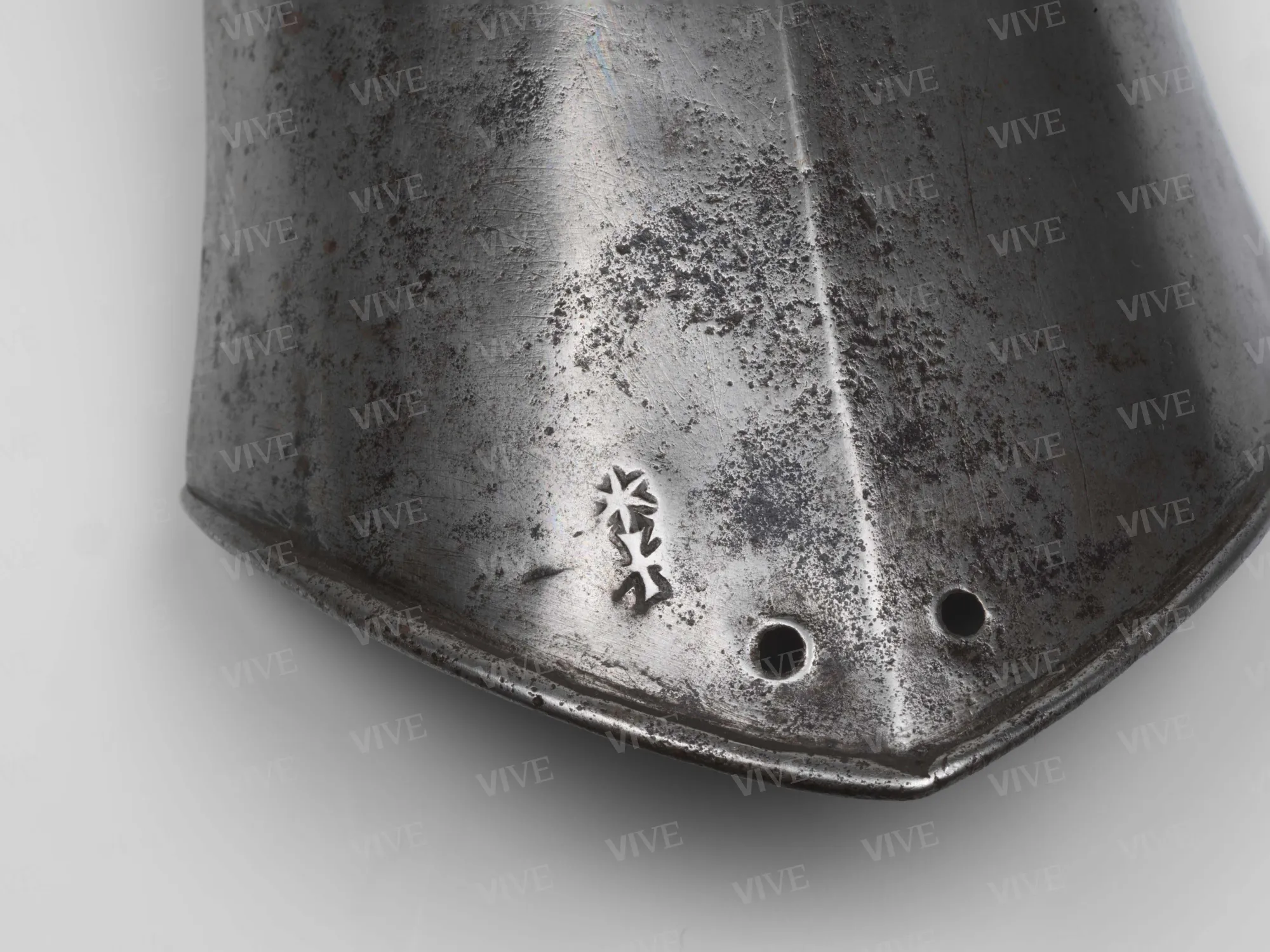Gauntlets
Austrian production C. 1490
These gauntlets were components of a suit of armor and are referred to as “mittene” when equipped with articulated plates. They provided strong defense while allowing for hand articulation to better wield weapons in battle. While the weapon maker's brand is unidentified, they can be traced to the German region between southern Germany and Austria, supported by similar armaments depicted in Albrecht Dürer’s works.
These gauntlets were components of a suit of armor and are referred to as “mittene” when equipped with articulated plates. They provided strong defense while allowing for hand articulation to better wield weapons in battle. While the weapon maker's brand is unidentified, they can be traced to the German region between southern Germany and Austria, supported by similar armaments depicted in Albrecht Dürer’s works.
Details of work
(b) manopola sinistra: altezza cm 31,7, larghezza cm 11,3, spessore cm 4.
Catalog entry
These gauntlets consist of a ribbed vambrace with two rivets used for fastening the lining. The eight plates that form the back and the knuckle guard are hinged to the vambrace: the four in line with the hand have grooves from the wrist to the knuckles, while the three protecting the fingers are angled for better fit (di Carpegna 1969, p. 24, n. 123). Both gauntlets are in satisfactory condition, although they show marks from impacts on the vambraces.
“Mittene” gauntlets evolved from simpler hand protection like leather or chainmail gloves. Made of hinged metal plates, they became popular in the fifteenth century and remained in use into the next century, offering solid protection with good hand mobility. (Gelli 1900, pp. 226–227 and 235–236; Oakeshott 2012, pp. 85–87; La Rocca 2017, pp. 59–63.)
Museums display several examples of similar gauntlets, including those part of the armor of Philip of Habsburg, known as the Handsome (1478–1506), made by Austrian weapons maker Hans Prunner (Thomas, Gamber 1954, plate 18). A pair at the Bargello National Museum in Florence bears the mark of German Kuntz Judenspiess (Scalini 1992, nos. 89–101), indicating production between the fourteenth and fifteenth centuries in the Germanic region. The gauntlets attributed to Lorenz Helmschmid from the von Kienbusch collection, now at the Philadelphia Museum of Art, are similar, but decorated with copper details (Breiding 2020, pp. 70–73, n. 16).
The "mittene" single, currently preserved at the Metropolitan Museum in New York, can definitively be attributed to the same workshop as the other pieces. It features a partially worn mark that can be traced back to the city of Innsbruck (Nickel, Pyhrr, Tarassuk 1982, pp. 29–31, n. 6).
The "mittene" gauntlets are part of the collection of Prince Ladislao Odescalchi (1846–1922), acquired by the Italian State in 1959 and housed at Palazzo Venezia since 1969. This extensive collection was not a family armory but was curated through selective purchases from both national markets, such as those in Florence and Rome, and international markets, including Paris and London, beginning in the late nineteenth century. These acquisitions reflect Odescalchi’s individual preferences (Barberini, 2007).
Giulia Zaccariotto
Entry published on 27 March 2025
State of conservation
Good (a) e (b).
Coats of arms, emblems, and marks
At the end of the hilt, on the arm, a cross on a six–pointed star.
Exhibition history
Rome, Museo Nazionale di Palazzo Venezia, Antiche armi dal sec. IX al XVIII. Già Collezione Odescalchi, May–July 1969.
Rome, Museo Nazionale di Castel Sant’Angelo; Rome, Museo Nazionale di Palazzo Venezia, Armi e potere nell’Europa del Rinascimento, July 26–November 11, 2018.
References
Gelli Jacopo, Guida del raccoglitore e dell’amatore di armi antiche, Milano 1900;
Thomas Bruno, Gamber Ortwin, Die Innsbrucker Plattnerkunst, catalogo della mostra (Innsbruck, Tiroler Landesmuseum Ferdinandeum, 1954), Innsbruck 1954;
di Carpegna Nolfo (a cura di), Antiche armi dal sec. IX al XVIII. Già Collezione Odescalchi, catalogo della mostra (Roma, Museo Nazionale di Palazzo Venezia, maggio-luglio 1969), con schede a firma del curatore, Roma 1969, p. 24, n. 123;
di Carpegna Nolfo, Le armi Odescalchi, Roma 1976;
Nickel Helmut, Pyhrr Stuart W., Tarassuk Leonid, The Art of Chivalry. European Arms and Armor from the Metropolitan Museum of Art, New York 1982;
Barocchi Paola, Gaeta Bertelà Giovanna (a cura di), Eredità del Magnifico, catalogo della mostra (Firenze, Museo Nazionale del Bargello, 19 giugno-30 dicembre 1992), Firenze 1992;
Barberini Maria Giulia, La collezione Odescalchi di armi antiche: storia della raccolta del principe Ladislao, in «Bollettino d’arte», s. VI, XCI, 2006 (2007), 137/138, pp. 101-114;
Fossà Bianca, Studio conservativo delle armi e armature Odescalchi. Nuove metodologie per la schedatura di una collezione, in «Bollettino d’arte», s. VI, XCI, 2006 (2007), 137/138, pp. 115-142;
Oakeshott Ewart, European Weapons and Armour. From the Renaissance to the Industrial Revolution, Woodbridge 2012;
La Rocca Donald J., How to Read European Armor, New York 2017;
Scalini Mario (a cura di), Armi e potere nell’Europa del Rinascimento, catalogo della mostra (Roma, Museo Nazionale di Castel Sant’Angelo; Roma, Museo Nazionale di Palazzo Venezia, 26 luglio-11 novembre 2018), con schede a firma del curatore, Cinisello Balsamo 2018, p. 79, n. II.8;
Breiding Dirk H., Arm and Armor. Highlights from the Philadelphia Museum of Art, Philadelphia 2020.

